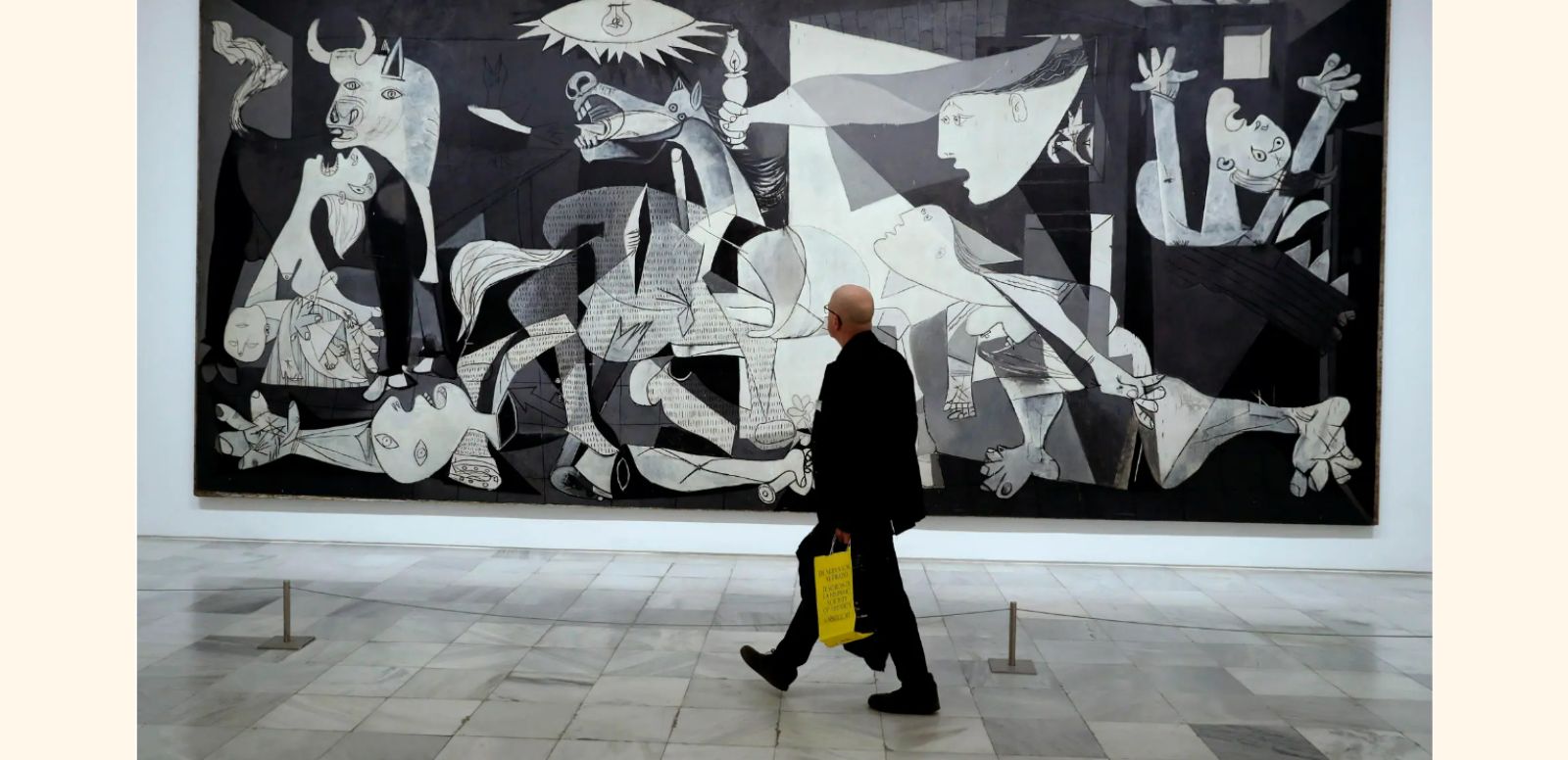
Forty-two years ago, Pablo Picasso's masterpiece, Guernica (1937), finally returned to Spain from New York. The piece had been in the custody of New York's Museum of Modern Art (MoMA) for more than four decades. In a silent and seemingly routine trip, a regular airliner transported Guernica (1937) to Spain for the first time on September 10, 1981.
To fully understand the significance behind this long-awaited journey it is essential to know its origin. In 1937, Picasso was commissioned to create a mural for the Spanish Pavilion at the Paris International Exposition. However, at the beginning of that year, the Malaga-born artist did not yet have a clear idea about the theme he would address in his work. The inspiration for this piece came in the most unexpected and tragic way. On April 26, 1937, the town of Guernica, in Vizcaya, was bombed during the Spanish Civil War. This attack, the first of its kind in history, left a deep impression on the mind of Picasso, who was closely following events in his native country. This event was the source of inspiration for the Malaga-born artist, who began work on the mural in May 1937 and quickly completed it on June 4 of the same year. The result was a work that captured the horror and desolation caused by the war.
The International Exhibition in Paris ended in November 1937. However, due to the political situation in Spain, the painting could not return. Guernica (1937) then undertook a tour throughout Europe as an ambassador of the Republican cause in various temporary exhibitions that sought to raise awareness about the war. Finally, in 1939, after the triumph of the rebel side and the establishment of Franco's regime in Spain, Picasso decided to entrust his work to MoMA for temporary custody. The Museo Nacional Centro de Arte Reina Sofía on its website Rethinking Guernica includes the letter, along with other documents related to the painting, addressed to MoMA, notifying the appointment of lawyer and politician Roland Dumas as executor to oversee the transfer of Guernica to Spain.
It was not until 1981 that Guernica was finally able to return to Spain. The entire operation, called the "Big Picture", was carried out in secret and was only known upon arrival for security reasons. The plane landed on the morning of September 10, with 319 passengers and 19 crew members on board, none of whom had any idea of the valuable cargo they were carrying in the hold. Upon landing, the flight commander, Juan López Durán, surprised everyone over the loudspeaker by announcing: "Ladies and gentlemen, welcome to Madrid. I have to tell you that you have come to accompany Picasso's Guernica on its return to Spain," although the painting had never actually been in the country before. Isabel Almazán and Beatriz Ganuza, two of the flight's cabin crew, shared in 2021 how they experienced that moment (to read the information on Iberia's website, click here).
Once landed in Madrid, the work was initially installed in the Casón del Buen Retiro, which was specially adapted to exhibit it under special security conditions, with armored glass protection. This location had a special significance since it was part of the Prado Museum of which Picasso was director. Later, in July 1992, the work made a final trip to the Museo Nacional Centro de Arte Reina Sofía.
Sources:
https://madridsecreto.co/dia-guernica-volvio-madrid/
https://grupo.iberia.es/pressrelease/details/13370
https://www.culturaydeporte.gob.es/dam/jcr:90a32940-ec1f-4597-b06d-10acdc9a8113/folleto-guernica.pdf
https://guernica.museoreinasofia.es/documento/desenrollando-guernica

